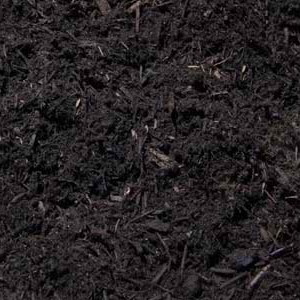
If you want your front landscaping or your back garden beds to have a dramatic visual impact, consider moving beyond naturally colored brown mulches and experimenting with other shades. Explore the benefits, drawbacks, and strategies in this brief guide to using colored mulch.
Why Use Colored Mulch?
Applying mulch with a strong hue gives your front yard or your backyard space an immediate pop of color. If you're looking to amp up the eye appeal with some dramatic contrast, colored mulch can help you do that.
Red mulch boosts the curb appeal for a drab or pale building, while black mulch beautifully sets off the crisp look of a modern building. Varying shades of brown mulch, from light brown to rich chocolate, work well for a more rustic or natural look that complements any architectural aesthetic.
Cautions for Colored Mulch
As you consider different hues of mulch, keep in mind that the color can affect more than just the aesthetics of your landscape. For example, black mulch tends to absorb sun and become hotter, so it's not the best choice for delicate, tender plants that need coolness and shade.
When you apply your colored mulch, wear gloves and old clothes, and cover up any exposed areas of skin. The dyes used in the mulch can sometimes come off onto your skin and clothes while you're working with it, and it's nearly impossible to get those stains out. Also, avoid walking across freshly spread colored mulch, since you might track the color onto the next surface you encounter.
Gardeners' Choice for Mulch
Some gardeners claim that using red mulch helps their vegetables thrive. In particular, cultivators of strawberries and tomatoes say that the red mulch reflects more sun and warmth toward the plants, ensuring healthy growth and a bountiful crop.
Some heat-loving plants do better in beds of black mulch. The dark mulch absorbs the sun's warmth, soaking it in and holding it around the plant like a blanket. If you plan on including plants that crave heat around the soil level, try black mulch.
Replacement of Colored Mulch
Eventually, your colored mulch will begin to fade. It's a natural process brought on by regular exposure to the sun and other elements. Keep in mind that to maintain that rich, dramatic color and its visual impact, you'll have to replace your colored mulch more often than you would a natural brown mulch.
Of course, anytime you need replacement mulch, whether it's naturally colored or artificially dyed, you can visit the Kurtz Bros., Inc. website and order a batch, in any quantity you need. You can also contact our landscaping experts at any time to glean tips, tricks, and valuable advice on the usage and application of mulch to your flowerbeds and garden.
